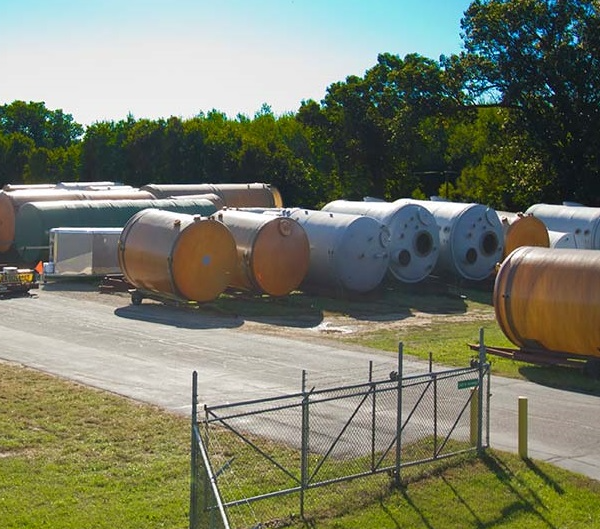
The design process is critical to the success of any retaining wall construction, particularly in cities that experience heavy snowfall. Lack of clarity, miscalculations, and inaccurate details can cost time and resources to clients. That’s why it is essential to consider the stone masonry retaining wall design for St. Paul Metro Area.
In this article, we will discuss essential construction factors to consider, ranging from the big-picture vision to minute details while designing a retaining wall.
4 Construction Considerations in Stone Masonry Retaining Wall Design for St. Paul Metro Area
1. Site Analysis
Site analysis lets us determine whether the property is suitable for development. It also establishes the parameters for creating the best design for the site’s physical and environmental features.
a. Soil Type and Stability
Different soil types have various load-carrying capacities and drainage qualities. Determining whether the soil is cohesive clay, granular sand, or a combination of the two is essential. Cohesive soils, for example, would harm the wall because they swell, shrink, and drain poorly despite having pipes in the backfill.
They can only get the support they need with a strong foundation of retaining walls. This information helps engineers design and build the wall’s foundation to suit the specific soil conditions, avoiding potential problems such as settling or wall tilting.
b. Drainage System
Inadequate drainage can cause water to build up behind the wall, putting more pressure on the structure and can cause instability. That being the case, a retaining wall must have a sound drainage system nearby to withstand the pressure of the soil and water.
This system collects and directs rainwater away from the wall. It relieves pressure on the soil surrounding the foundation and within the wall, reducing erosion and settlement. Water buildup can be reduced by studying the water flow and incorporating suitable drainage solutions, like gravel-filled trenches or drainage pipes.
2. Stone Selection
Material selection is an essential factor since it impacts the aesthetics and durability of the wall too. You can choose a natural or faux stone wall to create a stone masonry retaining wall design for St. Paul Metro Area.
a. Faux Stone
Engineered stones, such as concrete blocks or cultured stones, are far superior to stone masonry retaining walls. They provide durability, consistent shapes, and design flexibility, ensuring a long-lasting and appealing wall.
These cultured stones offer a variety of options that look like natural stones. These options frequently provide a consistent shape, making them a practical choice for stone masonry retaining wall design.
b. Natural Stone
Typically, you would see concrete block walls, but there’s a diverse range of natural stones in the market. Each type of stone has characteristics such as color, texture, and durability. Proper selection entails taking into account the specific site requirements as well as the desired visual appeal.
Granite and limestone are popular retaining wall stones; granite is a heavier stone with a reddish hue, whereas limestone is lighter in color and weight.
3. Foundation
Just like healthy roots secure a plant to the soil, a strong foundation also secures the wall to the ground. There are a few things to consider when designing the foundation for your stone masonry retaining wall design for St. Paul Metro Area.
a. Compaction and Excavation
First, you’ll need to prepare the ground where the wall will stand. This involves digging a trench large enough to accommodate the base of the wall and deep enough to reach a solid foundation. Moreover, to ensure soil stability, the team would have to do proper compaction to prevent settling during construction and later.
b. Footing Design and Size
The footing is the foundation’s broad base that distributes the weight of the wall over a larger area, preventing it from sinking into the ground. The size and design of the footing are affected by factors such as the height of the wall, the type of soil, and the weight it will bear.
4. Techniques
Construction techniques are essential in making your wall stand tall and resilient to the test of time. They are decided based on the project’s scope.
a. Building the Base Course
The first layer of stones is known as the base course. This course is the foundation for the remainder of the wall. Ensuring this layer is level and well-aligned is critical, as any errors here can cause issues as you build higher.
Each layer in stone masonry retaining wall designs for St. Paul Metro Area is slightly offset from the layer below it as you add more courses of stones to the stack. This gives the look of a “step-like” style and provides stability. The stones should fit securely together, with the weight of the upper layers helping maintain the shape of the lower layers.
b. Mortar and Setback Application
The selection of mortar impacts the quality of the construction process and the final retaining wall. Choosing the right one is essential to provide durable support to the stone and help in the creation of a solid, unified structure.
Another thing to add to the retaining wall design is setbacks, as they ensure it can withstand the pressure from the soil. It prevents soil erosion at the face of the wall and adds safety to a vertically leaning wall. This technique, known as battering, basically improves the wall’s stability.
c. Capping Stone
To secure your stone masonry retaining wall design for St. Paul Metro Area, make sure to add a coping stone. It is a flat stone that is used to cap free-standing walls as part of coping. Coping stones are essential in preventing rainfall from penetrating the wall. Furthermore, a properly matched top course of wall coping will protect the border and potentially save a small fortune in repair costs.
Wrap Up
Kicking off a project with the correct site analysis, an accurate material selection, and a clearly defined plan is crucial to the success of any wall construction project. And that can only be done by understanding certain factors in stone masonry retaining wall design for St. Paul Metro Area. These elements take a lot of time to decide but help ensure you work efficiently to build a fantastic retaining wall.










